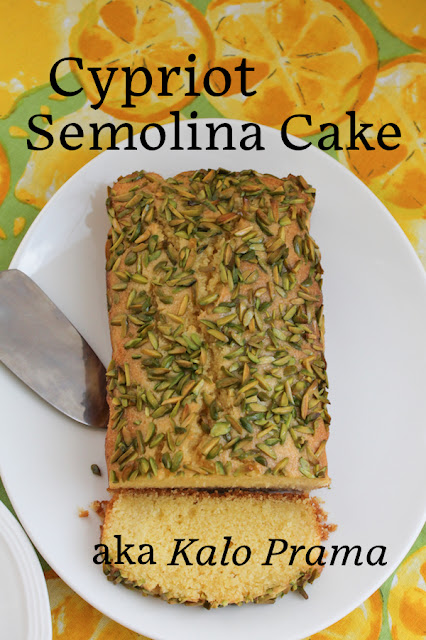Years and years ago, when I was in university, one of my best friends was a brilliant dark-haired girl with the widest smile and a wicked laugh. She was from Cyprus, a place I was completely unfamiliar with. Her small island nation was in still in upheaval after being invaded by Turkish forces in the mid-1970s, so she had been sent to study in the United States.
I’ve thought about her often over the years, especially just a couple of years ago when I planned a trip to Cyprus for a family holiday. I searched the student records at the University of Texas to see if I could find her whole name but without much luck. It is one of my deepest regrets that we lost touch.
While there is still a physical border between the Turkish held northeast and the Greek southwest, Cyprus is finally safe to visit. It is possible to cross over but we stayed on the Greek side in a gorgeous multilevel house built into a cliff, with a fabulous view of the sea. By day we explored the tourist sites, visited grocery stores and roadside stands (my favorite thing to do no matter where I go!) and in the evening we cooked tasty local ingredients for suppers at home and enjoyed the pool and view.
This special cake was on all the lunch menus, in all the local restaurants.
Kalo Prama or Cypriot Semolina Cake
I must confess: The pistachios are not traditional. Most recipes call for blanched almonds to decorate kalo prama. I’ve been trying to use the contents of my freezer and I could not resist adding the colorful pistachios instead of plain white almonds that I would have had to go out and buy. By all means use almonds if you have them. My recipe is adapted from one at SBS.au.Ingredients
For the cake batter:
1/2 cup or 100g sugar
1/2 cup or 113g unsalted butter, softened
1 cup or 185g fine semolina
1 cup or 125g flour
1 teaspoon baking powder
1/2 teaspoon vanilla extract
1/4 teaspoon salt
3 eggs, lightly beaten
For the syrup:
1 cup or 200g sugar
1/3 cup or 90ml water
1/4 teaspoon vanilla extract
1 tablespoon fresh lemon juice
Optional to decorate: blanched almonds or pistachio slivers
Method
Preheat the oven to 350°F or 180°C. Line a loaf pan with baking parchment.
To make the cake batter, whisk the butter and sugar together until light and creamy.
Add in the semolina, flour, vanilla and salt. Mix well. Finally, beat in the eggs until completely combined.
Spoon the batter into your prepared baking pan and smooth out the top.
Top with almonds or slivered pistachios, if desired.
Bake for about 25 minutes, or until a skewer inserted into middle of cake comes out clean.
While the cake is baking, make the syrup by warming all of the ingredients in a small pot, stirring until the sugar has dissolved. Set aside to cool.
As I was researching recipes, I came across this piece of advice from the Greek Food Alchemist: “Another big tip when adding syrup to a Greek or Cypriot dessert is to always have one cold. So if your cake is hot your syrup should be cold and vice versa. If both are hot then the dessert will crumble before your eyes beyond salvation (based on personal experience!)”
When your cake is finished baking, pour a little cool syrup over the hot cake. Once it has soaked in, add a bit more and wait for it to soak in. Repeat until all of the syrup is absorbed.
Leave to cool completely, then slice to serve.
Enjoy!
This month my Baking Blogger friends are sharing Greek, Cypriot or Turkish recipes. Make sure you check them all out! Many thanks to our host, Wendy of A Day in the Life on the Farm.
- Alevropita (Greek Thin-Batter Feta Pie) from Tara's Multicultural Table
- Apricot Sekerpare (Turkish Thumbprint Cookies) from Faith, Hope, Love, & Luck Survive Despite a Whiskered Accomplice
- Baked Kabak Mücver from Sneha's Recipe
- Bougatsa from Simply Inspired Meals
- Cypriot Lamb Tavas from Pandemonium Noshery
- Flaounes (Cypriot Cheese Pastries) from Culinary Adventures with Camilla
- Kalo Prama - Cypriot Semolina Cake from Food Lust People Love
- Kreatopita from A Day in the Life on the Farm
- Sekerpare from The Schizo Chef
- Simit (Turkish Sesame Bagels) from Karen's Kitchen Stories
- Tiropita (Greek cheese pastries) from Caroline's Cooking
Baking Bloggers is a friendly group of food bloggers who vote on a shared theme and then post recipes to fit that theme one the second Monday of each month. If you are a food blogger interested in joining in, inquire at our Baking Bloggers Facebook group. We'd be honored if you would join us in our baking adventures.








































.png)






























